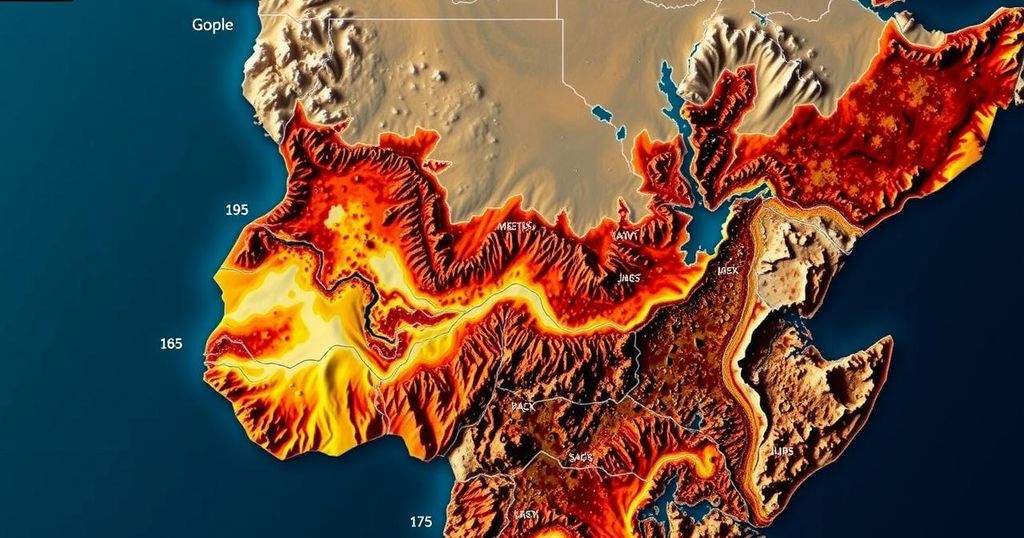Southern Africa is experiencing its worst drought in a century, impacting over 27 million people and leading to severe food insecurity. With declarations of national disasters in multiple nations, the crisis is exacerbated by rising temperatures and disrupted agricultural patterns due to climate change. The region faces a humanitarian catastrophe with significant malnutrition among children and extensive crop losses.
Southern Africa is currently experiencing its most severe drought in a century, with over 27 million individuals impacted, according to the United Nations World Food Programme (WFP). The ongoing crisis has resulted in widespread food insecurity, particularly affecting vulnerable populations, including 21 million malnourished children. Countries such as Lesotho, Malawi, Namibia, Zambia, and Zimbabwe have declared national disasters as the drought devastates crops and livestock, with Angola and Mozambique also facing significant challenges. The WFP has cautioned that the situation is set to worsen until the next harvest season in March or April of the following year. “A historic drought – the worst food crisis yet – has devastated more than 27 million lives across the region,” remarked WFP spokesperson Tomson Phiri. With the onset of the lean season in October, conditions are expected to deteriorate further, as countless families struggle to secure even one meal per day. The drought, exacerbated by the El Niño weather phenomenon and rising temperatures from climate change, has had dire consequences for the agriculture sector, as tens of millions of individuals in the region rely on rain-fed small-scale farming for their sustenance and income. Reports indicate that Zambia has witnessed a staggering 70 percent reduction in harvests, while Zimbabwe’s figures are even more alarming at 80 percent. Furthermore, the drought has substantially diminished hydropower generation capabilities across Southern Africa, leading to significant electricity shortages. In response to resource pressure, authorities in Namibia and Zimbabwe have resorted to culling wildlife, including elephants, to provide urgently needed food for local populations. Experts have highlighted that sub-Saharan Africa is particularly susceptible to the adverse effects of climate change due to its reliance on climate-sensitive agriculture and limited financial resources for climate-resilient adaptations.
The topic of the worst drought in a century affecting Southern Africa is critical in understanding the extensive humanitarian crisis unfolding in the region. This drought is linked to multiple factors, including climate change, which has exacerbated rainfall irregularities and intensified temperatures. The reliance on rain-fed agriculture in many sub-Saharan African countries makes them particularly vulnerable to such climatic variations. The repercussions include food shortages, malnutrition, loss of livelihoods, and significant impacts on biodiversity and natural resources. Understanding the background of these crises is crucial as they reflect broader challenges faced by the region due to climate change and resource management.
In conclusion, the unprecedented drought in Southern Africa has left millions facing hunger and malnutrition, with dire predictions of worsening conditions until future harvests. With significant crop failures reported, the livelihood of tens of millions is at stake, highlighting the pressing need for immediate humanitarian assistance and long-term strategies to enhance climate resilience in this vulnerable region.
Original Source: www.aljazeera.com







